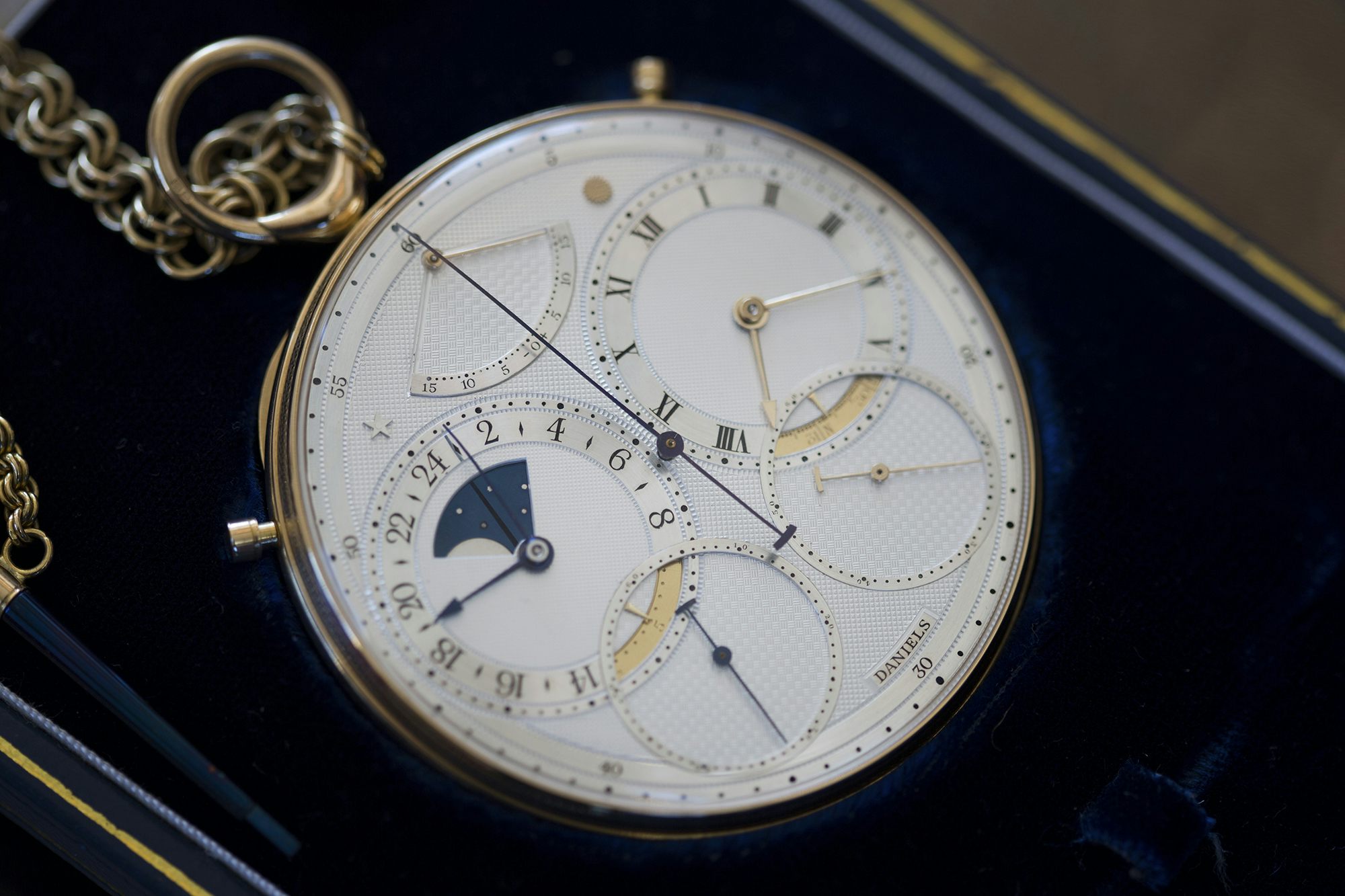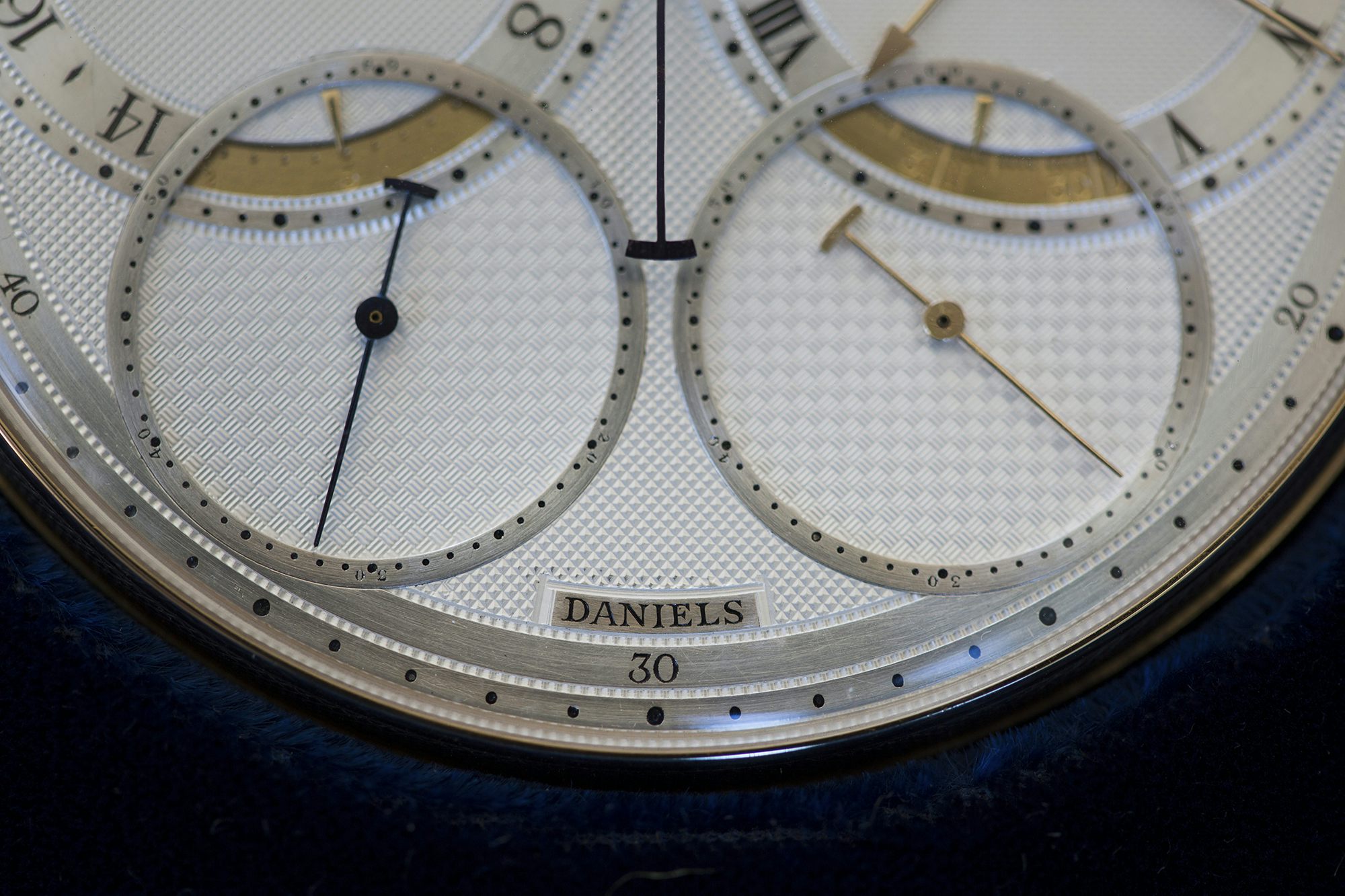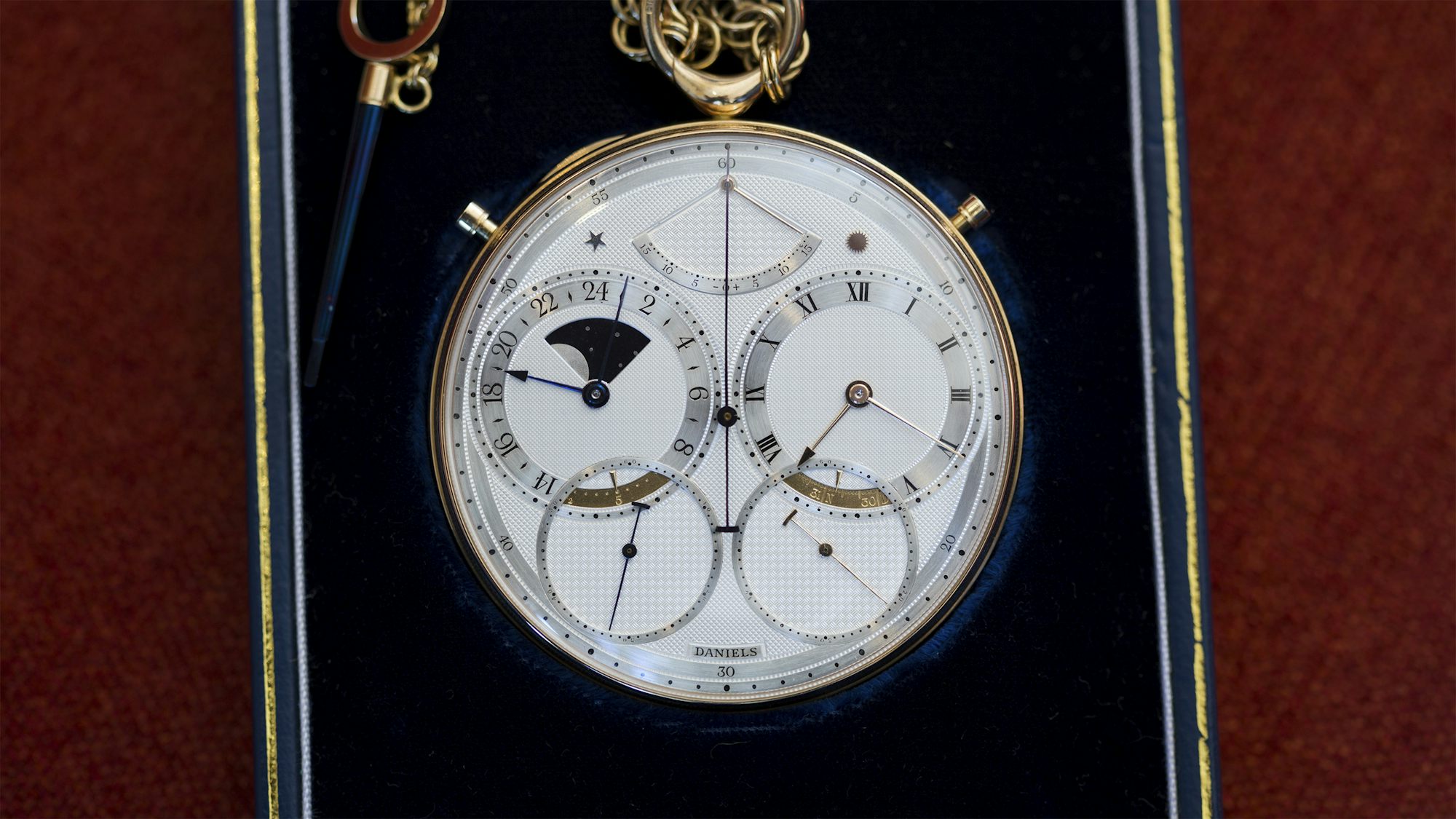Auction Report: Sotheby’s To Offer The Daniels “Space Traveller” Watch, September 19th In London
By Jack Forster
I don’t remember when I first heard about the Space Traveller watch but it was some time ago – probably in the very late 1990s, when I first became familiar with Dr. Daniels’ work. At the time, it seemed the most interesting and romantic watch I’d ever seen and despite the passage of twenty or so years, I’ve never really fallen out of love with it.

The Daniels Space Traveller pocket watch, also sometimes called “The Double Daniels.”
The Space Traveller was completed in 1982, and Dr. Daniels wrote about the impetus for its construction in his memoir, All In Good Time:
“The existence of this watch is attributable to Theodor Beyer, the proprietor of Chronometry Beyer of Zurich … he is a most serious collector of watches, and has two Daniels in his collection. One of these he acquired at dinner one evening in Zurich. During the course of the meal he demanded to see what I was wearing. I showed him my watch and he asked if he could buy it. It was my own watch and I declined to sell, but … he was adamant that he would not go home without it. I relented because the fascination of someone with his experience of watches was a compliment … and I could, after all, make another.”

The Space Traveller shows both mean solar and sidereal time, including sidereal and mean solar seconds.
The result was the Space Traveller. The movement is one of the most fascinating anyone has made since Breguet: two separate going trains, driving a single balance, with Dr. Daniels’ independent double-wheel escapement (itself derived from, and an improvement upon, Breguet’s double escape wheel échappement naturel.) One train tells sidereal time and the other, mean solar time. The usual way to show mean solar and sidereal time in a single watch is to basically put two watches in one case; one balance is regulated for mean solar time, and the other for sidereal time.

Illustration showing the difference between solar and sidereal time; source, Wikipedia.
A mean solar day of 24 hours is based on an average of all local solar days, which can vary by about a quarter of an hour plus or …read more







